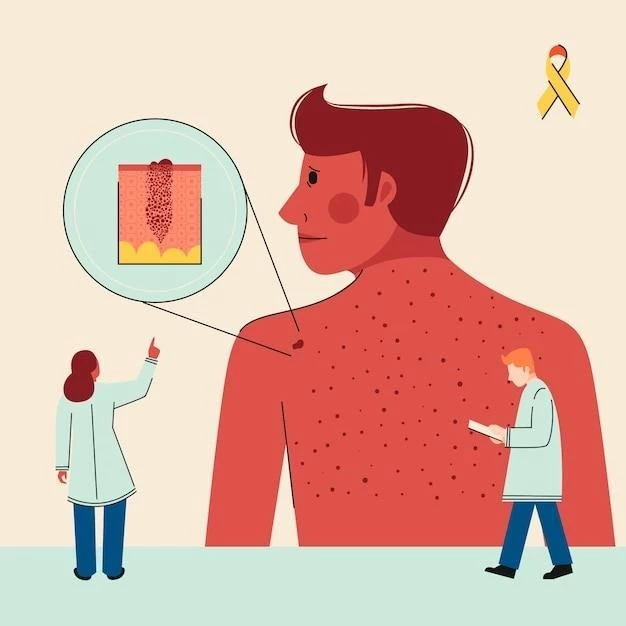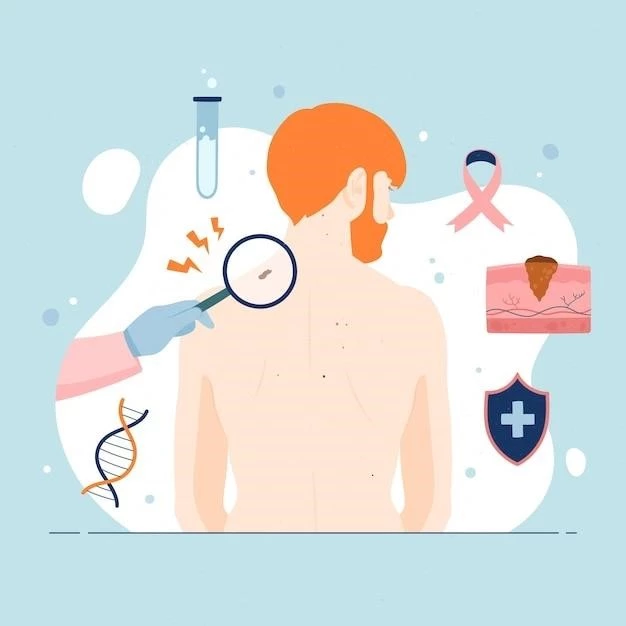Disease ౼ Melanoma Type 1
When it comes to Melanoma Type 1, understanding the disease is crucial. This article will delve into the causes, risk factors, prevention, early detection, treatment options, prognosis, and metastasis related to this malignant skin cancer.
I. Understanding Melanoma Type 1
Melanoma Type 1 is a form of skin cancer that originates in the melanocytes, the cells responsible for skin pigmentation. When exposed to UV rays from the sun, these cells can mutate and lead to the development of malignant tumors. Genetic mutations also play a role in the occurrence of this disease.
Melanoma Type 1 can affect anyone, but individuals with fair skin, light hair, and a history of sun exposure are at higher risk. It is essential to be aware of the warning signs, such as changes in moles or new skin growths, and seek prompt evaluation by a dermatologist.
Diagnosis of Melanoma Type 1 typically involves a skin biopsy, where a sample of the suspicious area is taken and examined under a microscope. Dermatologists use this information to determine the severity of the cancer and create a treatment plan tailored to the individual.
As with many cancers, early detection is crucial for successful treatment outcomes. Understanding the nature of Melanoma Type 1 and its causes can empower individuals to take proactive steps in prevention, early detection, and communication with healthcare providers.
II. Causes and Risk Factors
The primary cause of Melanoma Type 1 is prolonged exposure to ultraviolet (UV) rays from the sun or artificial sources like tanning beds. UV radiation damages the DNA in skin cells, particularly melanocytes, leading to mutations that can trigger the development of malignant tumors.
Several risk factors increase the likelihood of developing Melanoma Type 1. These include having fair skin, a history of sunburns, living in sunny climates, using indoor tanning devices, and having a family history of skin cancer. Individuals with many moles or atypical moles are also at higher risk.
Protecting the skin from UV exposure by seeking shade, wearing protective clothing, and using sunscreen with a high SPF can significantly reduce the risk of developing Melanoma Type 1. Regular skin checks and self-examinations to monitor moles for changes are essential in early detection.
Understanding the causes and risk factors associated with Melanoma Type 1 is critical in implementing preventive measures and adopting sun-safe behaviors. By minimizing exposure to UV radiation and addressing known risk factors٫ individuals can reduce their chances of developing this potentially deadly form of skin cancer.
III. Prevention and Early Detection
Preventing Melanoma Type 1 primarily involves minimizing exposure to UV rays. This can be achieved by seeking shade during peak sun hours, wearing protective clothing like hats and sunglasses, and using a broad-spectrum sunscreen with SPF 30 or higher.
Regular self-examinations of the skin can aid in the early detection of Melanoma Type 1. Individuals should be vigilant about changes in moles, such as asymmetry, irregular borders, varied colors, large diameters, or evolution over time. Any suspicious skin changes should prompt a visit to a dermatologist.
Annual skin checks by a dermatologist are recommended, especially for individuals with a family history of skin cancer or other risk factors. Dermatologists can perform thorough examinations of the skin, identify suspicious lesions, and conduct biopsies if necessary to confirm a diagnosis.
Early detection of Melanoma Type 1 significantly improves treatment outcomes and the likelihood of successful recovery. By adopting sun-safe practices, conducting regular skin self-exams, and seeking professional dermatological assessments, individuals can take proactive steps in preventing and detecting this potentially deadly form of skin cancer.
IV. Treatment Options
When it comes to treating Melanoma Type 1, several options are available depending on the stage of the cancer and individual factors. The primary treatment for early-stage melanoma is surgical excision, where the tumor and a margin of healthy tissue are removed.

For more advanced cases, additional treatments may be necessary. These can include immunotherapy, which boosts the body’s immune system to target and destroy cancer cells, and radiation therapy, which uses high-energy rays to kill cancer cells. Chemotherapy may also be used in some cases.
Clinical trials are another avenue for exploring novel treatment options for Melanoma Type 1. These trials, which test new therapies or treatment combinations, can provide access to cutting-edge treatments that may improve outcomes for patients with advanced or hard-to-treat melanoma.
The choice of treatment for Melanoma Type 1 is personalized and based on various factors such as the extent of the disease, the individual’s overall health, and the presence of specific genetic mutations. Collaborating closely with a dermatologist or oncologist is crucial in developing a comprehensive treatment plan that addresses the unique needs of each patient.
V. Prognosis and Metastasis
The prognosis for Melanoma Type 1 depends on various factors, including the stage of the cancer at diagnosis, the tumor’s characteristics, and the individual’s response to treatment. Early detection and prompt intervention play a critical role in improving outcomes.
If left untreated or undetected, Melanoma Type 1 can metastasize, spreading to other parts of the body such as lymph nodes, organs, or bones. Metastatic melanoma is more challenging to treat and has a poorer prognosis than localized melanoma.
Regular monitoring by healthcare professionals and adherence to follow-up appointments are essential for individuals diagnosed with Melanoma Type 1 to detect any signs of metastasis early. Early intervention in case of recurrence or spread can improve the chances of effective treatment and better long-term outcomes.
Survival rates for Melanoma Type 1 vary depending on the stage of the cancer and individual factors. Timely diagnosis, appropriate treatment, and ongoing surveillance are key elements in managing the disease and maximizing the chances of long-term survival and quality of life.
VI. Conclusion
In conclusion, Melanoma Type 1 is a serious form of skin cancer that arises from melanocytes and is often linked to UV exposure and genetic mutations. Understanding the causes, risk factors, prevention strategies, and early detection methods is crucial in combating this disease.
By practicing sun-safe behaviors, conducting regular skin self-exams, and seeking timely medical attention, individuals can reduce their risk of developing Melanoma Type 1 or detect it at an early, treatable stage. Treatment options, including surgery, immunotherapy, radiation therapy, and participation in clinical trials, provide hope for improved outcomes.
Prognosis and metastasis in Melanoma Type 1 underscore the importance of vigilance and adherence to follow-up care. By staying informed, proactive, and working closely with healthcare professionals, individuals can navigate the challenges of this disease and strive for the best possible prognosis and quality of life.
Continued research, advances in treatment modalities, and a commitment to raising awareness about skin cancer are essential in the fight against Melanoma Type 1. Together, through prevention, early detection, and access to cutting-edge therapies, we can make significant strides in improving outcomes and reducing the impact of this malignancy.
